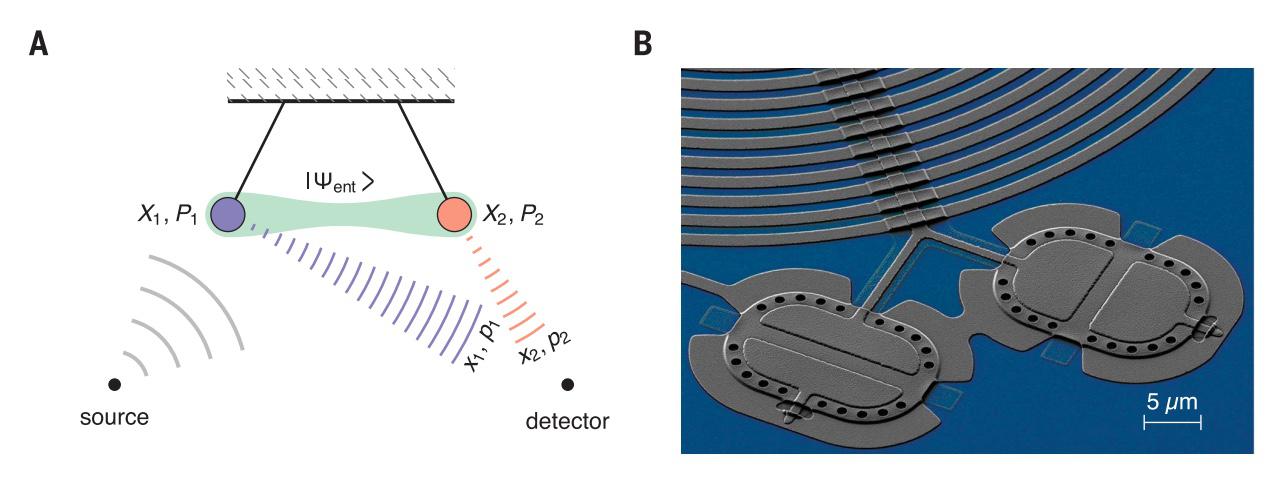Macroscopic quantum entanglement
Entanglement is the purest and most important quantum property. Unlike classical systems, quantum objects can be connected independently of their distance and if we perform a measurement in one part the other one is affected instantaneously. Intuitively, this can be considered a violation of relativity because this theory states that no information can travel faster than light, but there is no contradiction in the quantum measurement no real information travels. Entanglement has been proved to exist is many microscopic quantum systems including atoms, photons, ions, and particles.
Furthermore, as a quantum property, entanglement can be present in any kind of quantum systems. But what is a quantum system? Naively, sometimes people define “quantum systems” as “microscopic systems”, meaning that they must be tiny. This is a misconception, as quantum mechanics presumably applies to all kind of systems, big or small. The reason we do not see quantum effects in our normal life has more to do with isolation than with size. For instance, atoms, ions, and photons are relatively easy to isolate, and this allows the scientists to study their quantum properties. On the contrary, big macroscopic systems interact very strongly with their surroundings, and this makes it very difficult to see their quantum properties.
Luckily, experimentalists have many resources and very recently they have been able to create and measure entanglement between two macroscopic drumheads 1. These drumheads have masses of 10 picograms (a picogram corresponds to 10-12 grams, or 0.000000000001 grams). This can be considered a very small size, but it is much bigger than the typical quantum systems. Take for instance a Calcium ion 40Ca+, that is a kind of ion typically used in ions traps, it has a mass eight orders of magnitude smaller than the drumheads of this study. In other words, the system studied is about one billion heavier than atoms. The size of the drumheads is on the order or micrometers, ten thousand times bigger than the typical atom. This definitively a macroscopic system.
The drumheads of the study can oscillate, acting in a similar way as pendulums, as it is displayed in the next figure. They are close enough to each other to interact, meaning that they oscillations can be correlated (happening with the same phase) or anticorrelated (with opposite phases). The motion is activated by an electromagnetic pulse, and this pulse can be tuned to create quantum correlations between both pendulums.

The researchers could also monitor the motion of the drumheads by measuring their position and momentum. By doing so they could calculate the correlations between these magnitudes. The analysis of the experiment clearly shows that the oscillations of both drums present correlations that con only be explained by entanglement. This result opens the door to many different applications, including quantum teleportation of massive objects and the creation of hybrid mechanical-atomic quantum networks.
References
- Shlomi Kotler et al. (2021) Direct observation of deterministic macroscopic entanglement Science doi: 10.1126/science.abf2998 ↩